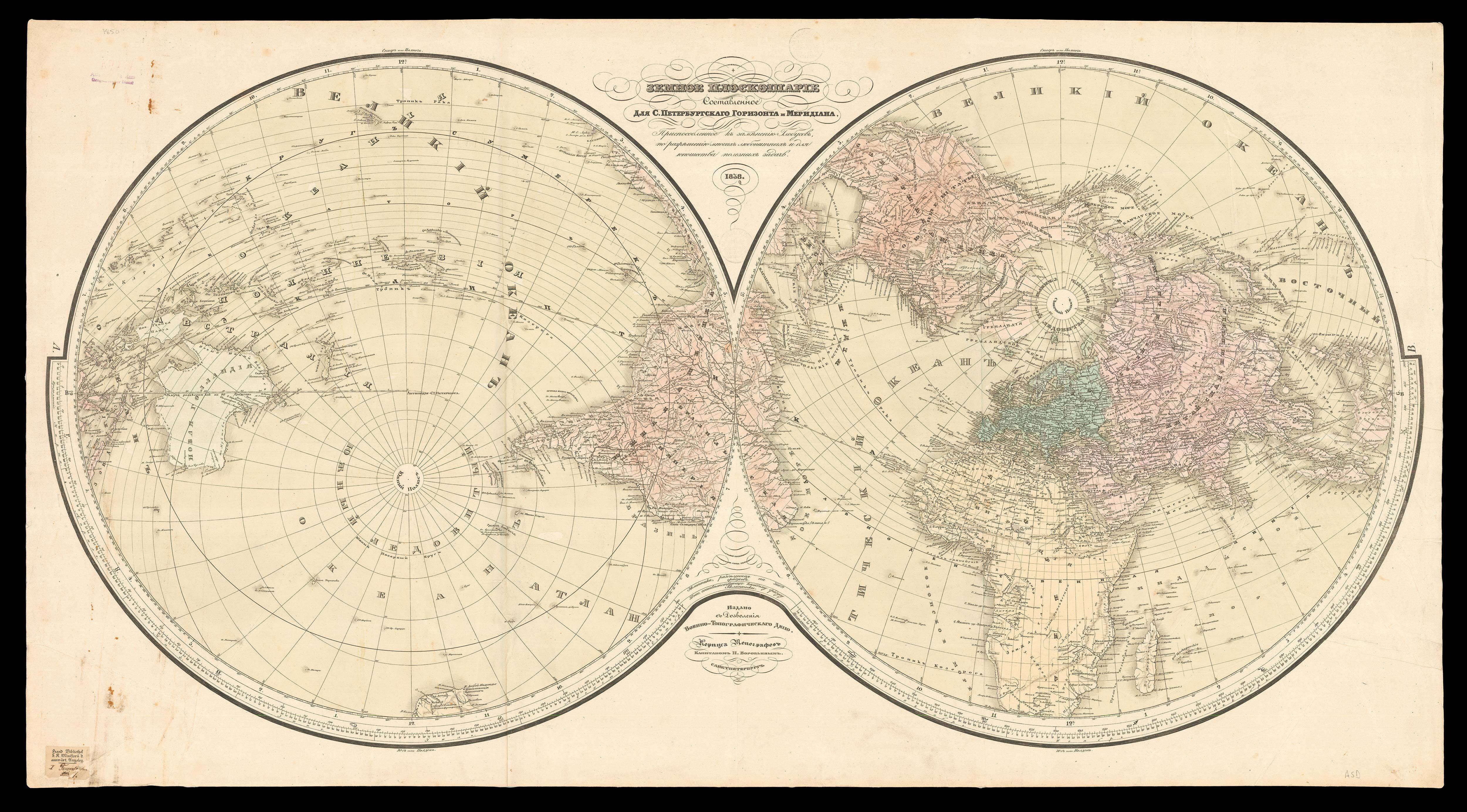

Ice Chart of the Southern Hemisphere compiled from the voyages of Cook, 1772-5, Bellingshausen, 1819-21, Weddell, 1822-4, Foster, 1828-9, Biscoe, 1830-2, Balleny, 1839, D’Urville, 1839, Wilkes, 1839, and Ross, 1841-2-3. ; from the papers on Icebergs in the Southern Ocean, by Mr. Towson, 1855-59 ; from 12th no. Metereological papers (Board of Trade), 1865, and documents in the Hydrographic Office / prepared for publication by Staff Com. F.J. Evans, and G.E. McDougall, Staff R.N
- Author: ADMIRALTY
- Publication place: London
- Publisher: Published at the Admiralty under the superintendence of Captn. G.H. Richards, R.N. Hydrographer
- Publication date: Large Corrections 1897, small corrections 1899 [1902].
- Physical description:
Engraved chart, loss to lower right corner skilfully repaired, not affecting image.
- Dimensions: (diameter) 615mm (24.5 inches) (sheet size) 875 by 690mm (34.5 by 27.25 inches).
- Inventory reference: 14277
Notes
A large chart of the Antarctic extending up to the 30th parallel.
As the advertisement below the chart states the principal reason for the chart’s publication was not only in order to map the known limits of the Antarctic pack ice, but also to plot the previous sightings of icebergs – each marked by a symbol denoting the month in which it was sighted – which, “drifted by the influence of winds and currents to low latitudes, have been found seriously to embarrass, and delay, as well as to imperil navigation”. The text goes on to qualify the placement of the bergs on the chart, by stating that iceberg placement and frequency has been known to vary considerably from year to year. Thus an “arbitrary boundary has been drawn on the chart, distinguished by colour the free or clear; from the more doubtful and indeed dangerous parallels”.
The chart was prepared by Commander J. F. Evans and Master G. F. McDougall. The data was compiled from previous voyages such as Cook’s, Bellingshausen, Weddell and Ross amongst others as well as John Thomas Towson’s work “Icebergs in the Southern Ocean” (1859), and other papers from the Hydrographic Office. As with many Admiralty charts, it was continuously updated and reissued with new information. The present example has large corrections to April, 1897 and small corrections up to March, 1899. To the bottom right is an “Admiralty Chart Agent” ink stamp dated 9 April 1902 and a corresponding “received” stamp of the “Prin. Examiner Master & Mates Board of Trade” on the verso, dated 10 April 1902. On the chart are numerous annotations in red and pencil, the majority marked with dates ranging from 1904 to 1909.
An examination of the example in the National Library of Australia, with corrections to 1870, reveals the addition of numerous iceberg sightings and the marking of several new voyages including H.M.S. Challenger, who sailed in the waters in 1874. The safe sailing boundary line shows little amendment, apart from its changing to the south of Australia, where the line has been moved five degrees further north to 45 degrees latitude. Other changes include the resetting of the text below the chart; the removal of the remarks on the use of the the thermometer; and the removal of the title from the centre of the chart to above the chart.
Rare. We are unable to trace another institutional example bearing the date 1899. Copac lists just five copies of differing editions: the British Library holding five distinct editions dated between 1866 and 1910; and the National Maritime Museum holding an example dated 1910; OCLC records several other holdings, including: National Library of New Zealand; National Library of Australia; and the Newberry Library.
 Rare Maps
Rare Maps  Rare Atlases
Rare Atlases  Rare Books
Rare Books  Rare Prints
Rare Prints  Globes and Planetaria
Globes and Planetaria 










